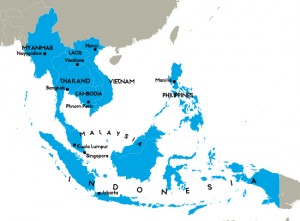ASEAN Case Study: The Auto Industry and GM
With the ASEAN Economic Community going into effect at the end of this year, many companies are now seriously considering moving their operations to the region. However, the question remains as to where in ASEAN to base your business. As such, it is helpful to consider corporations that have made the move to ASEAN in the past and to try and understand their reasons for doing so. We delve into GM’s expansion into the region and provide snapshots of their operations in a few key countries.
Understanding Inheritance and Estate Tax in ASEAN
Inheritance and estate taxes (sometimes referred to as “death taxes”) can have a significant financial effect upon your assets if you are not ready for their imposition. While ASEAN is working to standardize many financial regulations throughout the economic community, inheritance and estate taxes are still imposed differently depending on the country.
ASEAN Regulatory Brief: CIT Incentives, PIT Changes, Export Management Fees, VAT on E-commerce, and More
In this ASEAN Regulatory Brief, we look at some of the important regulatory changes taking place in Thailand, Cambodia, Malaysia, Indonesia, and Indonesia during the months of January and February.
Singapore to Become Southeast Asian Legal Hub with Opening of International Commercial Court
With its newly opened International Commercial Court, Singapore wants to become the alternative location for arbitration in Asia. The country has also made a series of other investments into its legal services sector and has established the Singapore International Mediation Centre (SIMC).
Business Optimism in Singapore Drops Again – Time to Worry?
Local businesses in Singapore started 2015 with a pessimistic outlook, continuing a downward trend for the third quarter in a row. According to the newest Business Expectations Survey (BES) – conducted by the Singapore Commercial Credit Bureau (SCCB) – the current Business Optimism Index (BOI) score of +1.11 percent, is the lowest since the first quarter of 2013. In the fourth quarter of 2014, the BOI stood at +10.79 percent. The SCCB has pointed to global economic uncertainty, rising cost pressures and manpower issues, as well as lower demand in the export-oriented sector, as possible drivers behind the lowered optimism.
Singapore-Vietnam in 2015: Trade and Investment Partners
As investment and trading partners, Singapore and Vietnam have proven to be an unstoppable combination – with 2014 bilateral trade up 20.3 percent year on year. Vietnam’s strategic location, low-cost labor, burgeoning consumer class, and incentives to foreign investors have made Vietnam an attractive destination for Singaporean foreign direct investment (FDI). While Singapore, with the highest GDP per capita in ASEAN, remains a prime market for Vietnamese exporters.
Indonesia Looks to Foreign Investment to Boost Economy
Indonesia is set to introduce a one stop service for providing ministry licenses, speed up the completion of government tenders by March each year, establish a land bank to fast track infrastructure projects and release a five-year $450 billion infrastructure investment plan.
Letters of Credit Required for Indonesia Commodities Exporters
A Rule from Indonesia’s Trade Ministry requires commodity exporters to use letters of credit (L/C) in overseas shipments from April 1, 2015. The new rule will effect coal, oil and gas, palm and palm-kernel oil, and minerals including tin. According to the Ministry, these commodities together accounted for over 41 percent of Indonesia’s exports from 2009 to 2013, averaging $US71 billion per year.
ASEAN Exchanges: Myanmar Integrates Further
Myanmar’s Deputy Finance Minister, Maung Thein, has announced that the over-the-counter Myanmar Securities Exchange Centre (MSEC) will be replaced with the Yangon Stock Exchange in October 2015. So far, ten companies are expected to meet the criteria for initial listing on the exchange.
ASEAN Open Skies Policy To Be Implemented in 2015
The ASEAN Open Skies policy will be implemented next year with the goals of increasing regional and domestic connectivity and enhancing regional trade.

















